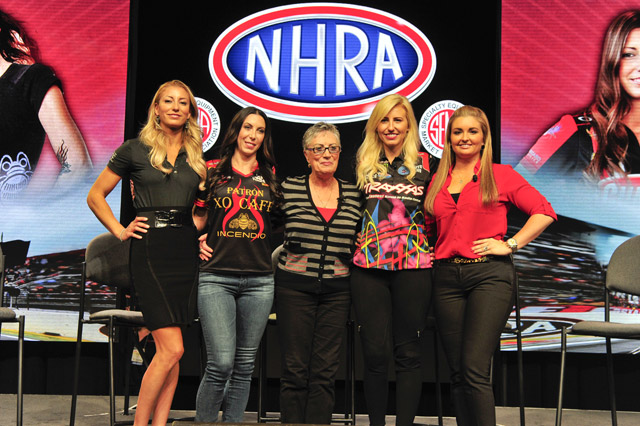
From left, Leah Pritchett, Alexis DeJoria, Shirley Muldowney, Courtney Force, and Erica Enders. (Image/NHRA)
NORWALK, OH — It’s nothing most of us haven’t seen before, so we think little of it.
Two drivers suiting up, making their way through the staging lanes and water box.
Two drivers prepping their race cars and tires with rubber-smoking burnouts before staging at the tree.
Two drivers who launch when they see yellow, and race side by side down the racetrack in pursuit of the lowest elapsed time and that coveted win light.
Spend any time at any dragstrip in the world—at a National Hot Rod Association race, or otherwise—and you’ll see the same routine play out over and over again.
We think little of it—unless we discover that one or both drivers are female.
Generally speaking, there’s nothing particularly noteworthy about a man winning an NHRA event.
And, generally speaking, it was—until recently—especially noteworthy when a woman did, even in the NHRA Mello Yello Drag Racing Series, which is the most diverse competitive professional sports organization in the United States, and perhaps anywhere.
Even though Hall of Fame racing legend Shirley Muldowney drove through the glass ceiling 40 years ago when she won her first NHRA national event, and proceeded to win NHRA Top Fuel championships in 1977, 1980, and 1982 (the first person to win multiple Top Fuel titles). And even though Angelle Sampey had 41 career NHRA Pro Stock Motorcycle wins since 2007, which put her #2 all time in the category (Sampey won her 42nd this season), and in the all-time top 25 of NHRA competitors until late last year. The female drivers, by virtue of being female, are often “The Story” coming out of another race weekend.
Something to Talk About
Of course, the drivers themselves have given race fans and the media good reason to talk about them.
John Force’s daughters grew up in drag racing. From Ashley Force Hood’s back-to-back U.S. Nationals wins, to Courtney Force’s eight Funny Cars wins (good for #24 on the all-time wins list), to Brittany Force’s two breakthrough wins this season in Top Fuel, the Force girls have made their legendary father proud.
NHRA’s female racers took another collective leap forward in 2014. A Courtney Force win in Kansas marked the 100th win by a female NHRA competitor. The list of winners had 14 names on it, and that was before Brittany Force, Leah Pritchett, and Angie Smith added theirs to the list.
In 2014, Funny Car driver Alexis DeJoria became the first woman ever to break four seconds, with a 3.997-second ET in Pomona, CA at the NHRA Winternationals. She won her first career race the following weekend in Phoenix, and then won again not long after in Las Vegas.
Also in 2014, Erica Enders transitioned from young upstart to breakneck wrecking ball, going on an absolute tear in Pro Stock, capturing the series championship—and then for an encore—unleashing total domination of the class in 2015 to defend her title.
Enders joined Sampey as the only women in NHRA history to successfully defend a championship title. Sampey won three consecutive Pro Stock Motorcycle crowns from 2000-2002. Enders became the third female champion of an NHRA pro class, joining Sampey and Muldowney.
The lady racers have continued to make headlines in 2016.
In Phoenix, Top Fuel’s Pritchett won her first NHRA Wally as a pro driver after outrunning Brittany Force in the finals. It was the first all-female Top Fuel final since Muldowney defeated Lucille Lee in 1982 in Columbus, OH. It was just the fourth time two women have decided a pro class victory in the Mello Yello series. Sampey and Karen Stoffer have met in the finals twice in Pro Stock Motorcycle, most recently here in Norwalk last year.
When Courtney Force won her first Funny Car race of 2016 on May 1 in Baytown, TX, it was the fifth consecutive NHRA race with a female winner.
Enders referred to the collective rise of female NHRA drivers as a “movement” in comments following her 2014 Pro Stock championship.
“It’s awesome to be a part of this female movement in NHRA,” Enders said. “I think it goes to show what we’re capable of and what a great platform NHRA gives all of us girls to climb the ladder and to get to where we want to go.
“To join two of my heroes, Shirley Muldowney and Angelle Sampey, who are both my friends now, as NHRA world champions, is simply unreal. The words of advice I’ve received from those two women means so much to me.”
But, SHOULD We Be Talking About It?
That’s the question, isn’t it?
In a world where a woman could be the next President of the United States, where women earn more higher-education degrees than men, and where most of our mothers and wives accomplish superhuman amounts of work every day, should it be a big deal that someone did something, but “Oh wait! She’s a girl, so let’s make a huge fuss about that part of it!”?
That depends on who you ask. And, like many things in life, it’s not as simple as black and white because context matters.
Mary Lendzion, a longtime racer and motorsports writer, would prefer to be thought of as a racer, and not a female racer.
“I just think it should be two racers,” Lendzion said in an interview at Summit Motorsports Park during qualifying at the Summit Racing Equipment NHRA Nationals in Norwalk.
“I’ve been into cars my whole life,” she said. “I started in a 12-second car and worked my way up to an eight-second car. To me, it’s just the two racers.
“I never cared if I was racing a male or female, and I hoped they didn’t care either.”
Lendzion said she understands, in the context of racing’s history, why the recent surge in female driver success has created a buzz, and why Top Fuelers Pritchett and Brittany Force meeting in the finals or Pro Stock Motorcyclists Sampey and Angie Smith meeting in the finals becomes “The Story.”
“I respect that that seems to be a big deal to people,” Lendzion said. “But do I wish it was just two people in the finals, and not two females in the finals? Absolutely.”
Bill Bader Jr., president of Summit Motorsports Park, offered an alternative viewpoint.
“This has always been a predominantly Caucasian male sport in that 18-54 demographic,” Bader said in an interview during the Summit Racing Equipment NHRA Nationals. “Ideally, in a perfect world, we’d all look past sex, race, color, and creed.”
But we don’t live in a perfect world, and in the interest of expanding interest in drag racing and reaching people beyond current fans of NHRA racing, he views it as the responsibility of NHRA marketers and drag racing promoters to share any story that might be perceived as unique or unusual.
“When you have female drivers like Alexis, or one of the Force girls; or an Antron Brown, or Cruz Pedregon—you jump on that. Not to be disrespectful. To be unique,” Bader said. “Our job is to connect on a personal level with families.”
In the United States, 48 percent of kids today are born to single parents, and often living in homes where they only sometimes, or never, see their fathers.
The question then becomes: “How do we get mom and the kids to come to the racetrack?” Bader said. “How do we connect with mom? If we’re going to survive, we have got to figure out how to market to women. So you start looking at the diversity of our sport. It’s something to be proud of.”
NHRA: ‘It’s Who We Are’
The NHRA is proud of the diverse makeup of its drivers and fan base, and of the fact that the sanctioning body doesn’t have to beat its chest or put “Hey! We’re diverse and stuff!” up in neon.
“When Wally Parks founded NHRA, he wanted everyone to come together,” said Scott Smith, NHRA’s senior communications manager.
Smith mentioned Barbara Hamilton, who broke the seal in August 1964 when, driving a supercharged 1937 Willys race car, she became the first woman to get an NHRA license.
But ask anyone even loosely familiar with drag-racing history who is responsible for the modern-day female movement throughout the sport today, and everyone says the same name.
“There’s an easy explanation,” said NHRA Funny Car driver Alexis DeJoria in an interview prior to her qualifying runs at the Summit Racing Equipment NHRA Nationals in Norwalk. “Shirley Muldowney happened to come in and blow the doors down. Her actions spoke louder than her words ever could. If other women came into other sports like that, something would happen.”
DeJoria acknowledges the relatively friendly and welcoming culture she and her fellow female NHRA racers experience today is radically different from what Muldowney and the female drivers of the ‘60s and ‘70s lived through.
“She was the first to come in and do very well back when it was not diverse in any way, shape, or form,” DeJoria said.
True story.
A year after Hamilton earned her license, Muldowney—the “First Lady of Drag Racing” and ranked #5 on NHRA’s 50 Greatest Drivers list—earned her own NHRA pro license and proceeded to work her way through the racing ranks until she became the first woman to get a Top Fuel license in 1973.
Smith echoed DeJoria’s comments.
“Shirley paved the way,” he said. “She went through many trials and tribulations to get us to this point.”
The 76-year-old Muldowney might call that an understatement. She did for female drag racers what Jackie Robinson did for African-American baseball players. She was great in the face of adversity—when some fans and competitors were actively rooting for her to fail.
“The NHRA was one of the first to accept women on an equal basis. And back in the ‘60s, I forced them to do that because I wore skirts during the week,” Muldowney said in a telephone interview. “They let me run at first, but wouldn’t accept my application for national events. Then, three or four years later, they finally accepted me into national events, and realized: ‘Holy crap. She can drive.’”
There was a contingent of male competitors in the 1960s and ‘70s who thought: “The racetrack is no place for a woman!”
It was ugly at first, Muldowney said.
“As the sport became more corporate, it was not as blatant and in your face. It was all done behind my back, because they were so weak. They couldn’t back up their mouths with any action.
“Today, if you walk up and bark about someone at the races, you’re fined $5,000. When I was racing, and coming down the return road, they used to hold up signs in the stands with ‘Show Us Your…’ you-know-whats written on it. It’s a whole different world now.”
Muldowney wasn’t just a female driver hanging with the boys. She was eating their lunches and collecting trophies.
Muldowney became the first woman to win an NHRA pro series championship when she captured the crown in 1977. And then, when she won the title again in 1980, she became of the first person of any gender to win multiple NHRA championships. She won her third championship in 1982, just in case there was anyone left who thought she shouldn’t be there.
Muldowney is proud of her place in drag racing history and pleased to see the growing presence and success of female competitors, not just at the NHRA level, but throughout motorsports.
“I am what I am because of what I endured and because of what I put up with and because of what I was—strong,” she said. “I had to be, otherwise I wouldn’t have made it.”
And now, an organically diverse culture has emerged in the highest level of drag racing.
“It’s not something we really have to talk about,” Smith said. “A lot of series tout diversity. We don’t tout that. We already have that. It’s who we are.”
“Sometimes,” Bader said, “all it takes are one or two people who look different.”
DeJoria said that if Ashley Force Hood hadn’t stepped away from drag racing, she would likely be racking up NHRA wins like her father, and like her younger sisters are now, and would have added her name to the list of NHRA series champions. She also tipped her cap to Melanie Troxel, who was once one round win away from winning a Top Fuel crown.
DeJoria pointed to young drivers coming up now through the Junior Dragster ranks as drag racing’s future.
She takes her mentorship role pretty seriously.
A young driver had crashed and flipped her junior dragster during a race, and was feeling anxious about getting back into her race car. DeJoria encouraged her.
In the young racer’s first return to the track, she got really scared and was having trouble staging the car. Her father ran up and told her to shut the car down and hop out if she didn’t feel ready, DeJoria said.
“Then, she’s like: ‘No. Alexis told me to be strong. So I’m going to be strong,’” DeJoria said. “Then she went down the track, and everything was fine.”
Because regardless of gender, color, or creed, it’s the strong and the strong-willed who earn win lights.
Fast race cars help, too.
And when you strip away all the noise, THAT is what drag racing is about, Muldowney said.
The Cars are Boss
While we focus on the gender of a particular driver, and while we use interesting personal stories in an attempt to connect with potential race fans, “The Story” from any given event is the same as it has always been, Muldowney said.
The story is the cars, she said.
“In the end, those cars are boss,” she said.
Muldowney doesn’t mean they’re “boss” in the way kids use the term to describe something awesome. She literally means the cars are in charge, and ultimately what drag racing is really about.
No amount of talent or skill will protect drag racers from being force-fed the occasional pile of humility.
“They will win in the end, whether it’s a good result or a bad result. The nitro fuel cars, I mean,” she said.
“One day, that thing will go down through there like Johnny Be Good,” she said. “Next week, you might not get down the racetrack.”
Muldowney suffered horrific injuries to her hands, pelvis and legs in a 1984 racing accident which required a dozen surgeries and 18 months of therapy before she could get back in a race car.
“It’s the most humbling class in motorsports,” she said.
Dig down deep enough and you’ll discover that, in the end, it’s not about money or fame. Countless racers hemorrhage money every year just to be a part of the action at their local drag strip. Fame? John Force remains the closest thing to a household name the sport has outside of engaged racing fans.
Drag racing bites you, Muldowney said. Hooks you. Almost like a drug.
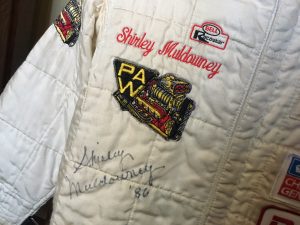
An autographed Shirley Muldowney racing suit from 1986 hangs in Bill Bader Jr.’s office in Summit Motorsports Park in Norwalk, OH. (Image/OnAllCylinders)
“It has made millionaires moderately wealthy. It has broken families. It has ruined marriages. The car wins in the end,” she said. “This sport is boss. And it will get you every time.
“We’re all guilty as sin. It’s such an addictive sport. You can’t get it out of your system.”
It’s about the scoreboard and the win light, Muldowney said.
“ET cures cancer,” she said with intentional hyperbole. “[Racers] could give a crap less about anything other than what comes up on that scoreboard.”
Ask a racer, or even someone like Bader, who has invested his life in the sport despite having never performed so much as an oil change—this sport is personal.
“There’s nothing that’s ‘business’ about this business,” Bader said.
Muldowney reflected on one of her favorite memories from her racing days, recounting one of her favorite conversations. Among the group of drivers and crew, someone said: “What would you do if Wally Parks walked up right now and said ‘Hey, there ain’t no purse this weekend’? What would you say?”
She said one of her friends and fellow racers jumped right up and said: “I’d say, ‘Get out of my way. I want the left lane.’”
Because that’s racing.
And maybe that’s “The Story.”
“Those cars are boss. They will teach you a lesson every single time. I don’t care who you are, or how long you’ve been there,” Muldowney said. “The car wins in the end.”

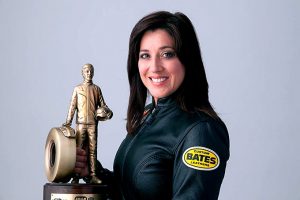

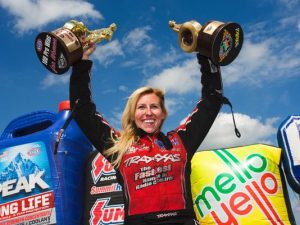
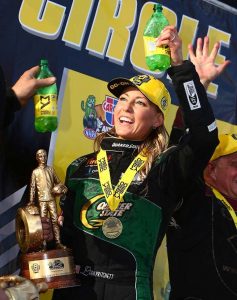
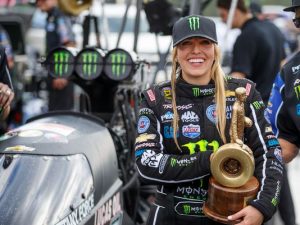
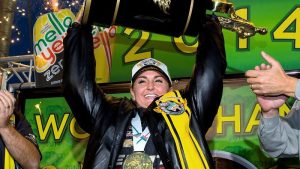
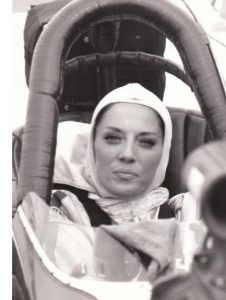
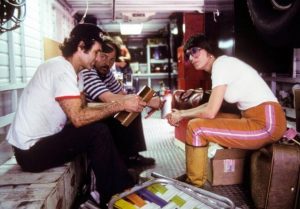
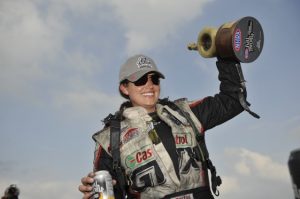
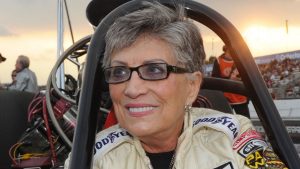
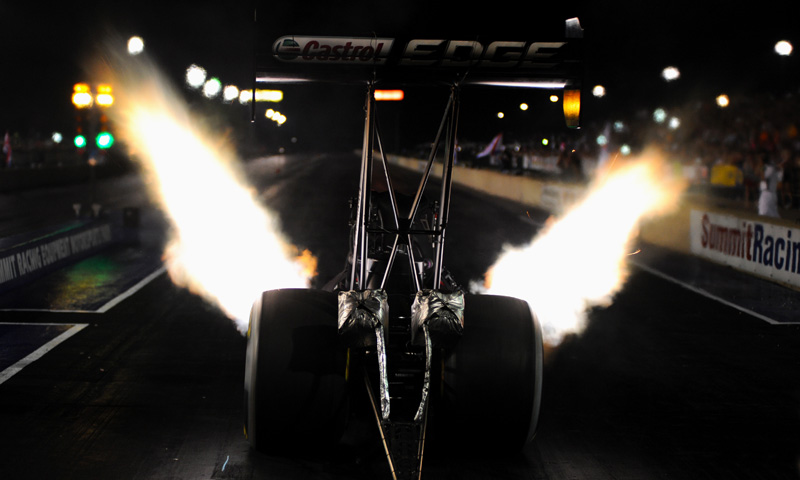
Excellent article We need to acknowledge the women after all we all have Mothers,sisters wives ,girl friends I think in these trying times most guys would admit the role of women is more then ever as business partners, race partners, co parents, we are all hands on deck and need everyones skills. To echo Shirleys comment the cars really are the boss Upset the boss and it will cost you! With that in mind should we not promote the crew more? We have to answer to the boss try to convience him to do things are way and deal with the after math!Auto Racing (including drag racing) has always made the driver the hero The crew are seen as this bunch of eccentric techno nerds who are more comfortable talking in numerical decimal equivalents than english and frankly as a eccentric techno nerd crew person there right!But we are missing an enormous opportunity First there are alot of techno nerds that once introduced to drag racing become die hard fans. There is enough going on in a Top Fueler to keep an MIT class busy for 3 years Technology is brain power and knows no boundaries of race,sex,creed If your brain understands Nitro there are no limits. We need to approach our fantastic pool of crew chiefs and innovators record interveiws and learn from them Not just where we are today but what got us here. Garlits, Coil,Lahay Johnson, the contributors is as endless as the info. Diversity could be promoted along the way We could easily accomodate more women in the crews Many women are great mechanics but its not promoted It would keep NHRA as a contemporary organization Women in the sport?business on all levels
[…] Driving Like a Girl: A Winning Trend 50 Years in the Making […]